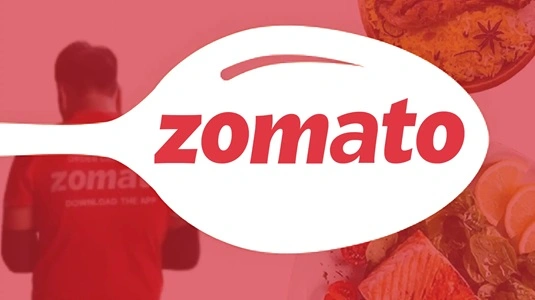Zomato, a pioneer in India’s food delivery and quick-commerce market under Eternal Limited, has evolved significantly. In Q4 FY25, the company reported a 77.7% YoY drop in consolidated net profit to ₹39 crore—down from ₹175 crore in Q4 FY24—despite a 64% YoY revenue jump to ₹5,833 crore. The growth was driven by robust performances from Blinkit and Hyperpure, while Blinkit also expanded its dark-store network aggressively even as losses widened. Q1 FY26, whose results are due July 21, is expected to show ~57% YoY revenue growth and margin improvement, with Blinkit GOV up over 133% YoY. As Zomato balances growth, profitability, and cash burn, a structured SWOT analysis offers insight.

Strengths
1. Market Leadership & Diversified Business: Zomato supplies millions of users via four key arms—food delivery, Blinkit (quick commerce), Hyperpure (B2B supplies), and District (ticketing). It commands top share in Indian online food delivery.
2. Explosive Revenue Growth: Food delivery revenue surged over 16–17% YoY, Blinkit GOV more than doubled, and Q4 FY25 consolidated revenue grew 64% YoY. Q1 FY26 is expected to show consolidated revenue growth of ~56.8% YoY.
3. Quick-Commerce Leadership: Blinkit leads in quick commerce, increasing store count steeply. In Q4, GOV jumped to ₹1,709 crore, a 122–133% YoY spike.
4. Profitability Recovery & Analyst Optimism: Analysts expect margin improvements: Nomura forecasts food delivery EBITDA at 4–5%, with Blinkit losses narrowing significantly. Morgan Stanley affirms an “Overweight” rating, citing strong balance sheet and quick-commerce market potential.
5. Brand Equity & Innovation Culture: With a loyal customer base, strong network effects, and fast experimentation (e.g., shutting Zomato Quick), Zomato is agile and brand-prominent.
Weaknesses
1. Pressure on Profitability: Q4 FY25 net profit plunged 78%, largely due to Blinkit’s expansion push, which saw adjusted losses widen to ₹178 crore.
2. High Cash Burn in Blinkit: Blinkit’s rapid expansion involved opening 294 stores in Q4, significantly raising losses and cash outflows.
3. Slowdown in Core Delivery Segment: Food delivery grew only 17% YoY in Q4, below management expectations, with pressures from partner shortages and sluggish demand.
4. Reliance on Growth for Profit Recovery: Improved margins hinge on Blinkit reaching scale and significant GOV growth—an outcome still uncertain.
Opportunities
1. Quick Commerce Boom: Blinkit’s GOV is projected to reach ₹57 billion TAM by 2030. Continued scaling can position Zomato as a dominant player.
2. Food Delivery Margin Leverage: With target food delivery EBITDA margins at ~4–5% by FY26, there’s room to deliver sustained profitability.
3. Hyperpure B2B Expansion: The B2B supplies unit (Hyperpure) is scaling rapidly, fulfilling demand from restaurants and cloud kitchens—a high-margin opportunity.
4. Services Consolidation in District: Integration of ticketing and events via the District platform allows Zomato to expand into adjacent consumer verticals.
5. Monetizable Customer Base: A massive active user base enables expansion through advertising, subscriptions, and premium models.
Threats
1. Intense Competition: Zomato competes fiercely with Swiggy in both food delivery and QC, and faces new entrants in next-day delivery.
2. Regulatory Scrutiny: Delisting of 19,000 non-compliant restaurants impacted Q4 GOV. Dependence on partner ecosystems means further regulatory entanglements may occur.
3. Continued Cash Burn: Sustained Blinkit losses may strain the balance sheet; margin pivot depends on steep scale gains.
4. Macro Slowdown Risks: Consumer slowdown or inflation could dampen discretionary food spending, impacting core delivery revenue.
5. Execution Risk: Scaling QC and distribution operations is complex; any logistical failure could hurt user experience and brand perception.
Future Outlook
Sharp Revenue Momentum Ahead: Q1 FY26 results (due July 21) expect 56.8% YoY revenue growth, with Blinkit growing 122–133%, and margin improvement (~130 bps QoQ).
Quick-Commerce Targeted Break-Even: Zomato aims for EBITDA break-even in Blinkit within the next 3–4 quarters, riding on store efficiency and take-rate gains.
Steady Food Delivery Margins: With EBITDA now targeted at 4–5%, Zomato could shift from growth-first to sustainable profitability in its core business .
Diversification into B2B and District: Scaling Hyperpure and District can balance revenues and enhance profit mix beyond core delivery.
Cash Flow & Valuation Upside: With Morgan Stanley bullish on QC’s long-term TAM and profitability trend, Zomato may unlock significant upside ¾ share price potential from strong execution .
Competition and Efficiency Balance: Strategic pricing and quick-commerce efficiency will determine whether Zomato sustains leadership amid intensifying competition.
Zomato is at a critical stage: balancing fast-paced expansion in quick commerce with revived margin discipline in food delivery. If Blinkit achieves scale and core margins stabilize, the company could evolve into a self-sustaining multi-vertical platform. Execution in the next 2–3 quarters will decide whether growth reaps profitability—or continues to erode cash.